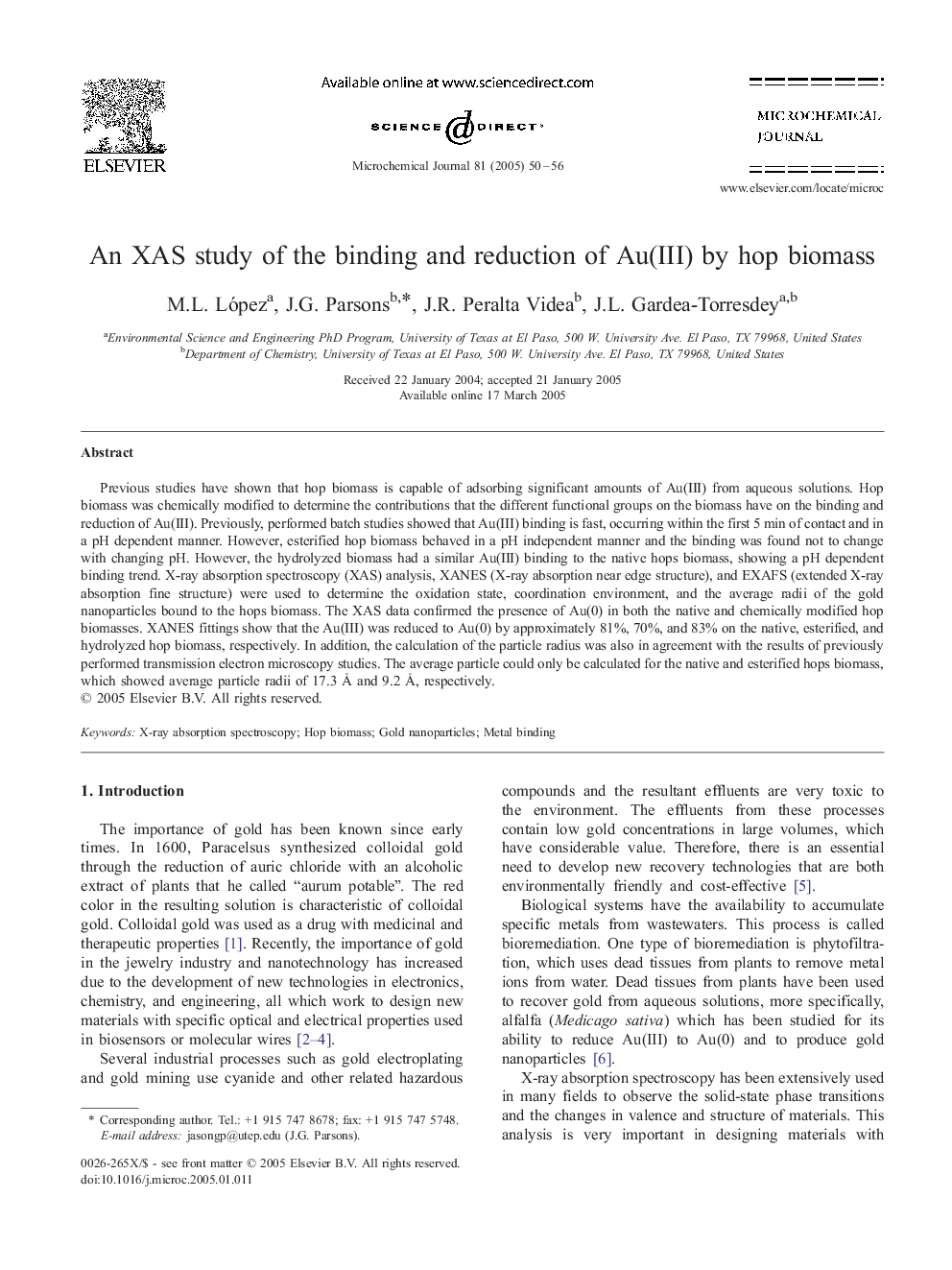| Article ID | Journal | Published Year | Pages | File Type |
|---|---|---|---|---|
| 10557218 | Microchemical Journal | 2005 | 7 Pages |
Abstract
Previous studies have shown that hop biomass is capable of adsorbing significant amounts of Au(III) from aqueous solutions. Hop biomass was chemically modified to determine the contributions that the different functional groups on the biomass have on the binding and reduction of Au(III). Previously, performed batch studies showed that Au(III) binding is fast, occurring within the first 5 min of contact and in a pH dependent manner. However, esterified hop biomass behaved in a pH independent manner and the binding was found not to change with changing pH. However, the hydrolyzed biomass had a similar Au(III) binding to the native hops biomass, showing a pH dependent binding trend. X-ray absorption spectroscopy (XAS) analysis, XANES (X-ray absorption near edge structure), and EXAFS (extended X-ray absorption fine structure) were used to determine the oxidation state, coordination environment, and the average radii of the gold nanoparticles bound to the hops biomass. The XAS data confirmed the presence of Au(0) in both the native and chemically modified hop biomasses. XANES fittings show that the Au(III) was reduced to Au(0) by approximately 81%, 70%, and 83% on the native, esterified, and hydrolyzed hop biomass, respectively. In addition, the calculation of the particle radius was also in agreement with the results of previously performed transmission electron microscopy studies. The average particle could only be calculated for the native and esterified hops biomass, which showed average particle radii of 17.3 Ã
and 9.2 Ã
, respectively.
Related Topics
Physical Sciences and Engineering
Chemistry
Analytical Chemistry
Authors
M.L. López, J.G. Parsons, J.R. Peralta Videa, J.L. Gardea-Torresdey,
